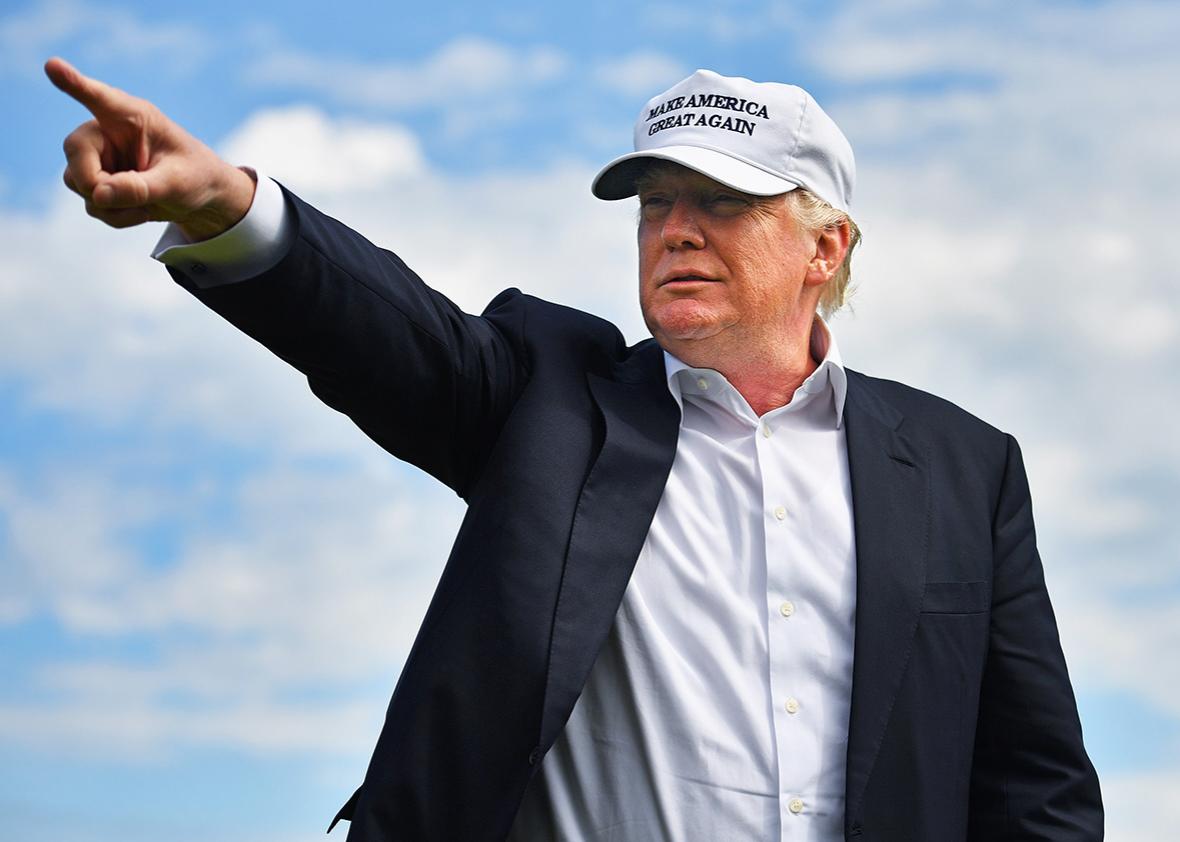If Donald Trump has done anything consistently in the year he’s run for president, it’s play nice with white supremacists.
That’s not to call Trump a bigot; it’s impossible to know what’s in his heart. But what Trump feels is less important than what he does. As a real estate developer and casino owner, he was sued for breaking anti-discrimination laws. During Barack Obama’s first term, he accused the president of foreign birth, blasting him as illegitimate and unfit to lead. And as a presidential candidate, he’s called for racist policies—surveillance and heightened scrutiny of Muslim Americans, a ban on Muslim immigration to the United States—and adopted racist rhetoric.
That rhetoric goes beyond the early (and false) claim that Mexico was sending “rapists” to the United States under the guise of immigration, beyond his attacks on Judge Gonzalo Curiel for his Hispanic heritage. Trump, who relies on social media to drive his message, has used his enormous Twitter platform to amplify racist and white supremacist messages. He’s retweeted anti-black memes, white nationalist writers, and users with handles like whitegenocideTM. And over the holiday weekend, Trump tweeted an anti-Semitic image of Hillary Clinton, complete with a Star of David placed on a background of cash. “Most Corrupt Candidate Ever!” read the star, which evoked old stereotypes of Jewish greed and avarice. The image wasn’t a Trump original—it came directly from a neo-Nazi Twitter account. The Trump campaign tried to claim it was a sheriff’s star, in an absurd attempt to dismiss the outrage as “political correctness.”
Zoom out and the picture is even more disturbing. In one comprehensive analysis of Trump campaign accounts—from Trump’s own to that of staffers and surrogates—Fortune magazine found that the presumptive Republican presidential nominee has retweeted at least 75 users who follow “influencers” for the “#WhiteGenocide” hashtag, the rallying cry of racists who believe there’s an effort to eliminate the “white race.” In turn, a majority of those accounts are followed by more than a hundred such influential users. Katrina Pierson, Trump’s national campaign spokeswoman—who is black herself—follows the most influential “#WhiteGenocide” account on Twitter. And that’s just one example.
How this happened is its own question. Are these accidental follows and retweets, mistakes born of ignorance? Do they reflect a symbiotic relationship between the online white nationalists who flocked to Trump last summer and the campaign itself, which rewards and reinforces the praise with interaction? Does it represent an alliance between figures in the Trump campaign and racist reactionaries online? Or, as Josh Marshall argues for Talking Points Memo, is it just that “Trump keeps ‘accidentally’ retweeting and embracing authoritarian racism because he’s an authoritarian racist?”
Let’s table that discussion for later. For now, it suffices to say that it’s happening—that the Trump campaign is a superhighway for an organized horde of hate that defines much of the pro-Trump grass-roots presence online. Rooted in online communities like Reddit and 4Chan, these supporters—who often identify as “alt-right,” a current of conservative politics on the internet where racism thrives and anti-Semitism flourishes—are virtual shock troops against journalists who criticize Trump or scrutinize his campaign and its personalities. Jewish journalists, in particular, face the worst abuse.
Trump isn’t responsible for his followers. He doesn’t direct them. But he doesn’t criticize or rebuke them either. He hems and haws when asked if he renounces an endorsement from a white supremacist; he demurs when confronted with anti-Semitic attacks in his name; he indulges and amplifies bigotry from supporters at his rallies and events; he incorporates their ideas about cultural takeover into his speeches. Anti-Semites and white nationalists have built new networks and communities, and Trump is expanding their reach in the most direct ways possible. The Star of David tweet isn’t the first broadcast to mainstream politics, and it won’t be the last.
If political media exists to do anything, it’s to reveal this flow from the fringe. To educate audiences on what these ideas mean, to give context for symbols like the one we saw on Saturday. Thus far, the media seems ill-equipped for the job. For every display of “pro-truth” bias, there are a dozen examples of mindless coverage, as reporters present racist rhetoric as simple “controversy” or frame anti-Semitic propaganda as a “he said/she said” dispute.
This is how ideas and symbols that were once considered beyond the pale become less so. They leave the realm of taboo and enter the world of partisan combat, where ethics and meaning are a function of tribal identity. People who wouldn’t have backed this rhetoric now defend it. And even those who don’t, like House Speaker Paul Ryan, decline to change their political commitments. In short order, the boundaries of political speech expand to include outright bigotry. Right now, Trump is showing his dedicated following of white supremacists that you can deny the humanity of other people and still thrive in mainstream politics. If this all feels dangerous—like the beginning of a new, more frightening kind of politics—that’s because it is.
